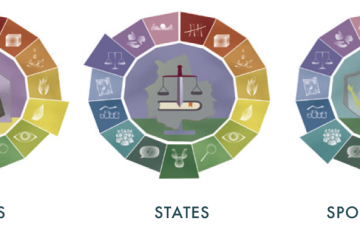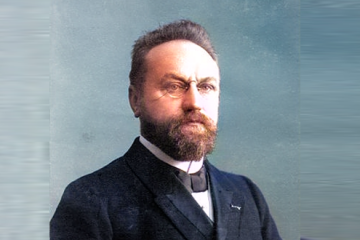I’m struck by the richness of St Luke’s account of the first Easter. I always find it fascinating how the Gospel writers juxtapose the elements of their accounts, especially Luke: how one episode sheds light on the next once I ignore the chapter breaks. And the passion narratives are especially rich for their compilation of different people’s perspectives. There’s something here that reminds me of academic diversity – as I shall explain anon.
So starting, for argument’s sake, in Luke 22, we have first a hint of Judas Iscariot’s tragic mercenary perspective, and then a sense of the charged sacramental atmosphere of the Last Supper. Then a remarkable glimpse into Jesus’ communion with his Father on the Mount of Olives suddenly gives way to that strange, dark confrontation with the army of priests. Then come Peter’s triple denial and private grief, leading straight into the climactic court scene with three competing judges: the Jewish elders, Pontius Pilate and Herod. In this scene (richly ironic in each Gospel account), generosity, mercy and forgiveness are exchanged in all directions except the crucial one: our Lord remains condemned – even while praying for his own executioners. Beneath a sign where three languages declare Christ’s real identity, two contrasting perspectives are shared by his companions before all views are obscured by the masking of the sun. We are left with Jesus’ own last words and several different responses to the whole melancholy scene.
We could well continue this analysis into the account of the Resurrection, but I leave that as an exercise for the reader! Here I just want to pause to reflect on how rich and realistic the story is made by its incorporation of so many different people’s viewpoints, different aspects of experience and different interpretations.
Different viewpoints are something we know all too well in academic life; do we value them and strive to hear them fully before dismissing (or accepting) them?
Different aspects of experience are also inescapable: I’m thinking here of the spatial, physical, biotic and sensory aspects of a situation, which invariably fill out our mental imagery, as well as the innovative, symbolic, aesthetic, economic, social, juridical, gratuitous and certitudinal (credal) considerations that flesh out Luke’s account – and are always part of our lived experience. Fellowship with colleagues from other disciplines can be a good way to explore these aspects academically, although they surely impinge in various ways on any project at all.
Finally, we have differences in interpretation: source of frustration and controversy… or stimulation and insight? One starting motive of reformational philosophy is to account for the way that different scholars, faced with the same evidence, can hold conflicting views. But see how gentle Luke is: he simply sets divergent interpretations of Jesus’ passion alongside each other (with masterly juxtaposition, of course) and leaves the audience to assess them.
The Gospel accounts are not to be confused with analyses or research. But in the end my research often gets presented in narrative form. Either way, I find food for thought in meditating on the diversity of Gospel stories.
- Philosophy in full colour - October 21, 2025
- Flowers not flavours in AI: How large language models resonate with the beauty of creation - May 19, 2025
- Artificial thinking? - April 2, 2025


